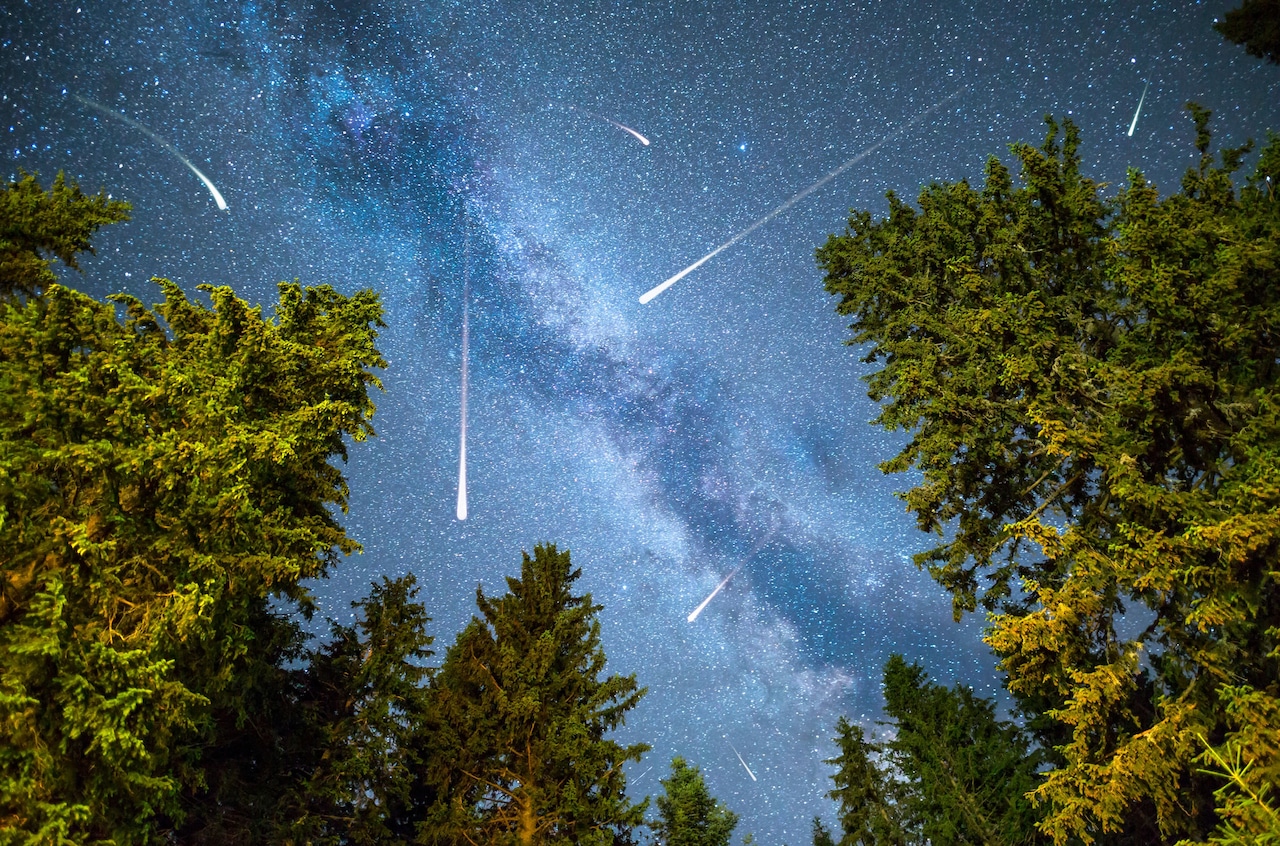As the summer season kicks off, skywatchers will be eagerly waiting to see the king of all meteor showers: the annual Perseid meteor shower.
According to astronomy experts from EarthSky.org and Sky & Telescope, this year’s Perseid display is expected to be a very good exhibit for people willing to stay awake and stargaze after midnight. They say the moon will be in its first quarter phase, with about 50% illumination, when the Perseid meteor shower reaches its peak activity on August 12, 2024.
“The best time to watch Perseids is from around midnight (when the moon sets) until dawn,” says EarthSky. “This shower gradually rises to a peak and then quickly decreases. And Perseid meteors tend to increase in number as late evening deepens into the wee hours before dawn. The shower is often best just before sunrise.”
For the best chance of seeing some shooting stars this summer, the EarthSky website recommends that skywatchers find a dark location — as far away from bright city lights and streetlights as possible — and look up after midnight on August 11 and 12. August 13.
Be sure to give your eyes a few minutes to adjust to the darkness before scanning the night or early morning sky.
Lots of shooting stars
The Perseid meteor shower could produce as many as 50 to 100 meteors per hour in dark locations, assuming Mother Nature cooperates and provides clear skies.
Worth noting: If you don’t have a chance to scan the sky between August 11 and 13, you still have a chance to see some Perseid meteors on other nights or in the early morning hours. This meteor shower will begin producing small numbers of shooting stars in mid-July and will continue to do so through September 1.
However, the greatest number of meteors are expected around August 12, when Earth will pass through the largest field of debris from the tail of a comet known as Comet Swift-Tuttle. The comet zooms around the sun, leaving a trail of tiny ice and rock particles, and every August our planet passes over the debris.
Even though the particles are very small, when sky observers on Earth see some fragments, they look like shooting stars streaking across the sky. And some look like big, bright fireballs.
“The meteors are colorful. And they often leave behind persistent trains,” says EarthSky.org. “All these factors make the Perseid Shower perhaps the most beloved meteor shower for the Northern Hemisphere.”
This meteor shower is known as the Perseids because “the radiant region – the area in the sky where the meteors appear to originate – is near the prominent constellation Perseus, the Hero, when it is at maximum activity,” notes the American Meteor Society op.
Viewing tips for the Perseid meteor shower
You can see the Perseid meteors almost anywhere, but experts say you’ll increase your chances of a good view if you go to a park or open area in a rural spot, away from bright light.
You don’t need a telescope or binoculars, just your eyes. But you should give your eyes about twenty minutes to adjust to the dark when looking at the night sky.
And the astronomy experts at EarthSky say if you’re looking for the Perseids, there’s no need to be in a hurry. “Give yourself at least an hour of observation time,” they say, “because the meteors in meteor showers come in bursts and are interspersed with pauses.”
Thank you for trusting us to provide the local news you can trust. Please consider supporting NJ.com with a voluntary subscription.
Len Melisurgo can be reached at LMelisurgo@njadvancemedia.com or press X to @LensReality.
